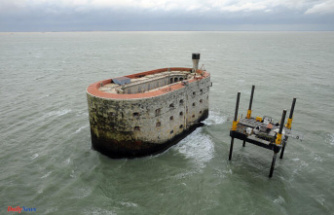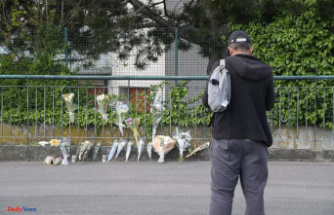After traveling 2,000 million km, the probe will choose the place in which in 2020 will take samples of the soil
The goal is to bring to the Earth the material collected in 2023
Spectacular landing on the small asteroid Ryugu
looking for plan to save the Earth from an asteroid.
it Has been a long journey, but finally the ship espacialOSIRIS-REx has arrived at its destination, the asteroid 101955 Bennu. After traveling 2,000 million kilometers in 27 months, the probe of NASA was the Monday to 19 kilometres of this small celestial body, whose orbit is to be inserted the next December 31. That day will be positioned just 1.25 km from its surface. A maneuver that, according to the space agency of USA, it will be particularly complex due to the asteroid just measures 492 feet in diameter -equivalent to five football stadiums - and its gravitational field is weak.
"we're impatient to begin the exploration of Bennu. For years we have been preparing for this moment and we are ready," said Dante Lauretta, principal investigator of this mission at the University of Arizona. The task of the OSIRIS-REx now will be to investigate the asteroid to choose the place where in July of 2020 will present its robotic arm during five seconds to pick up soil samples -at least 60 grams-.
you Will have three opportunities to achieve this and, once done with the material, will a new direction to the Earth so that it can be analyzed by the scientists. The scheduled date for the landing of the capsule with the samples of Bennu is the 24 of September of 2023. A task, the "bring our planet a part of the Solar System primeval", Lori Glaze, acting director of the Division of Planetary Science of NASA, defined as "herculean".
why NASA has chosen Bennu as a target for this mission of 865 million euros? The scientists from the University of Arizona who lead this project have a number of reasons. In the first place, they believe that this asteroid is part of the remains of the bricks that formed the planets of the Solar System, so studying it will help understand how life originated. The material you remove would be, therefore, exceptionally old as our solar system was formed about 4,600 million years.
Risk impacton the other hand, asteroids like Bennu contain natural resources such as water, organic material and metals, that in the future, when there is the technology to extract them, could be used by humans to obtain minerals that are in short supply in the Land or to facilitate the exploration of other planets.
finally, as evidenced by the craters found in different places of our planet, the asteroids are a threat because of the risk of impact. According to the scientists, to work in one of them will speed up the development of technologies for that, maybe in the future, humans are able to divert the trajectory of rocks identified in advance that may represent a threat.
In fact, there is a small risk that Bennu could crash into the Earth within of 166 years. In the ranking of the 72 near-Earth objects that could potentially pose a threat, Bennu occupies the second place. The probability of impact against the Earth is of a between to 2,700 during the period 2175-2196, according to the estimates of scientists. In the next few years will be able to better determine what will be the orbit future of the rock and if indeed, our planet is in danger.
ROCK ALIENSSince the astronauts of the Apollo program went to the Moon between 1969 and 1972 and collected a total of 382 kilograms of material from our satellite, only four robotic probes have brought back samples from other celestial bodies: three probes soviet (Luna 16, Luna 20 and Luna 24) brought between 1970 and 1976, about 326 grams of three different places of the Moon, while the probe-the japanese Hayabusa was able to collect about 1,500 grains of soil from the asteroid 25143 Itokawa.
According to the criteria of
Learn more Date Of Update: 18 December 2018, 08:01











